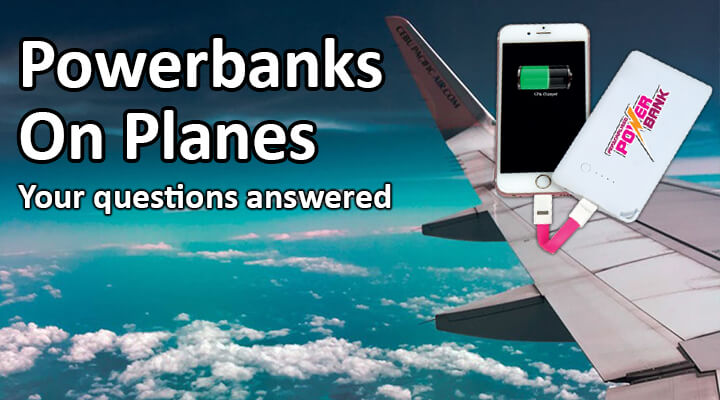After Covid-19 numerous families had to put their travel plans on hold. But with all restrictions set to end in March are you counting down the days until you can jump on a plane? We know we are. But as we head to the airport do you know the rules regarding Powerbanks on Planes? And do you know other countries travel rules and regulations?
You may not know that there were any Ponerbank on plan rules! But as we have a large collection of Personalised Powerbanks, we wanted to give you all the information before you fly.

Why are power banks prohibited in the cargo hold on flights?
Airlines do not allow power banks in the cargo luggage for the purpose of safety. Power banks are essentially batteries that utilize lithium cells. As lithium batteries are more likely to combust and are therefore prohibited for cargo transport, as part of air-transport regulations.
So, you don’t want them in the baggage compartment. If they’re taken on board as hand baggage, in the rare situation that they may catch fire, they can be dealt with more easily as there are fire extinguishers in the cabin.
What kind of power banks can i take on planes?
The following rules regarding Powerbanks on Planes are according to the Civil Aviation Administration in China. These rules are standard for many airlines around the world:
- Power bank must be for personal use.
- You can only take 2 power banks with you.
- One powerbank may have a capacity of up to 27,000mAh. Or if you are taking 2 powerbanks, together, they can have a capacity of up to 27,000mAh.
- Power banks must be in hand luggage or carried around. It is not allowed to carry power banks in checked luggage.
- Sometimes, power banks with a capacity between 27,000mAh and 43,000mAh may be taken onto a plane, but only in consultation with the airline.
- Power banks with a capacity of more than 43,000mAh can’t go with you on the plane.
How Is Wh Calculated?
Here is the method to find Watt Hours: Just take Milliamp Hours/1000 x Voltage = Watt Hours (mAh)/1000 x (V) = (Wh)
For example, our Powerbank Plus which has an 8000 mAh and an output voltage of 40 =
8000 mAh / 1000 = (8 x 5V) 40 Watt Hours
Does My Power Bank Need Any Protections to Fly With?
The number of protections found in power banks depends on who produced it. A RAVPower power bank typically features these common protections:
- Over Current Protection: Stops the power bank from delivering a current that exceeds the amplitude of the connected device. Safety mechanisms like circuit breakers, overcurrent relays, and fuses provide instantaneous protection.
- Over Charge Protection: Prevents the power bank from continuing to charge a device that is outside the protection range (3.00 V to 4.20 V). This will avoid thermal runaway.
- Short Circuit Protection: This is another type of overcurrent protection. In this situation, the protection ensures that there is always a direct path for the current to travel. This prevents the cell from overheating which can cause a fire.
- Over-Discharge Protection: Stops the discharge rate from falling below 2.7 V/cell to 3.00 V/cell. This reduces battery cell stress and allows some extra power to self-discharge down to 2.50 V/cell. When that happens, the lithium-ion battery will “sleep” to protect against itself.
- High-Temperature Protection: Prevents the power bank from charging or discharging when battery temperature exceeds 60°/140F*.
Our Powerbanks have passed allitridum simulation, thermal, vibration, shock, external short circuit impact and forced discharge tests, which meet the United Nations “recommendations on the transport of dangerous goods” manual of Tests and Criteria (ST/SG/AC.10/11/Rev.6), Part 111 sub-section.
We hope you have found our Powerbanks on Planes information useful. Remember you can personalise your own Powerbank on our website and have a great range to choose from.
